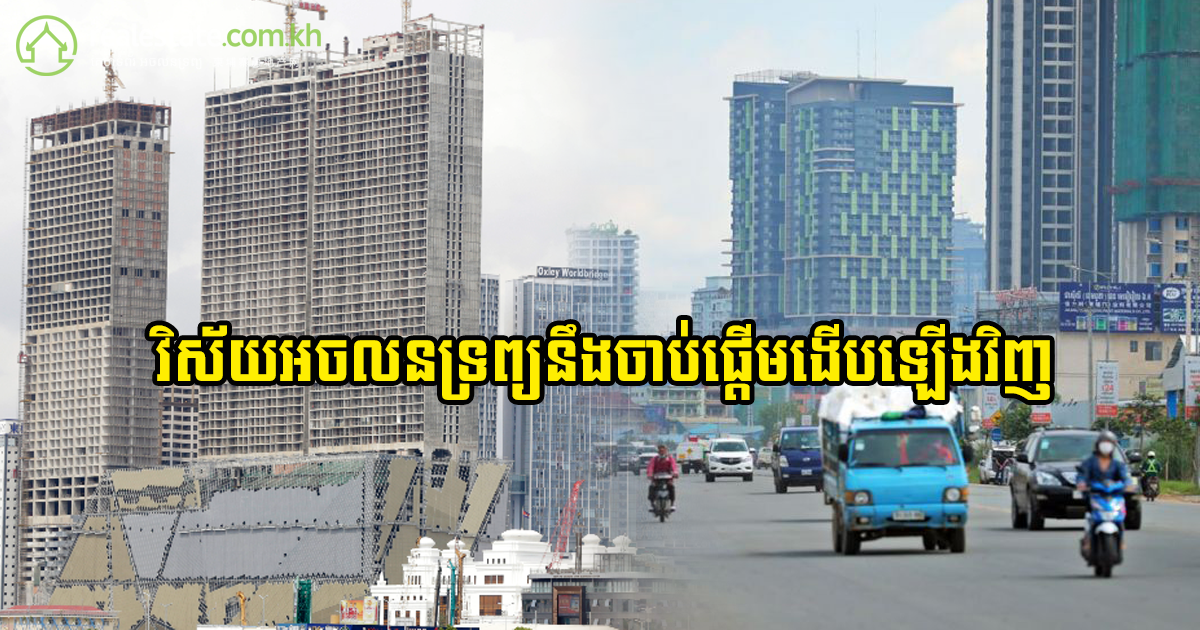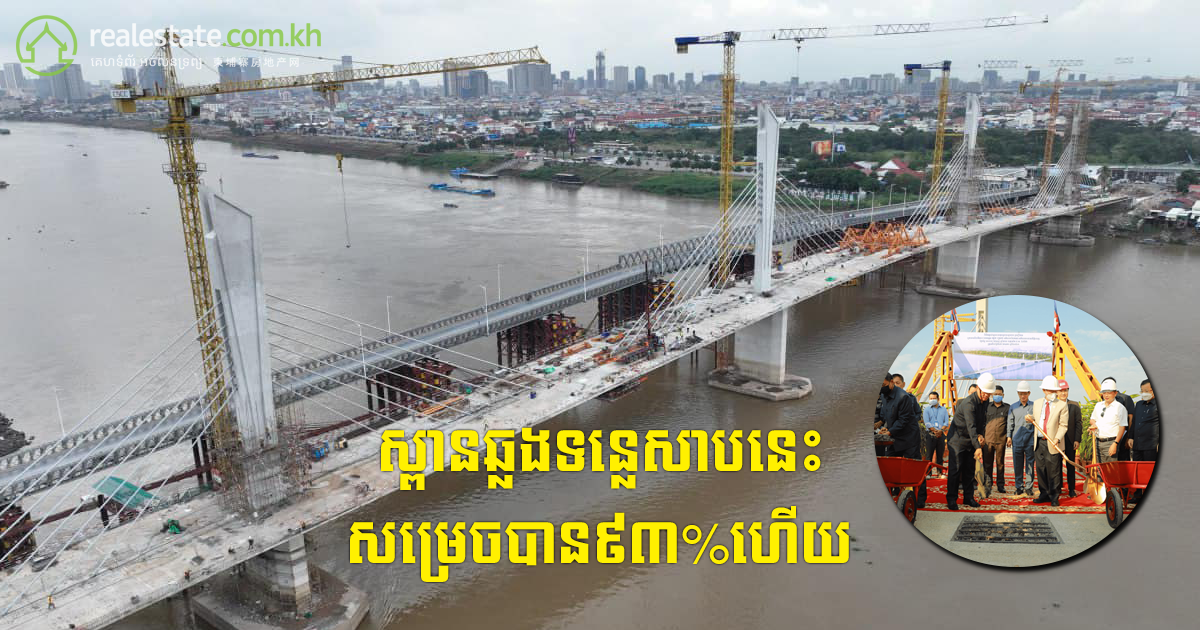As land prices increase in the Cambodian capital’s CBD, property developers are seeking open land on the outskirts of Phnom Penh. One area that has seen continuous growth in recent years is the city’s Northwestern districts of Russey Keo.
 For the most part, the Northwest is becoming a haven for Khmer families looking to settle outside the inner city. Stretching between two major township developments of Camko City and Grand Phnom Penh, a host of Boreys and township projects are springing up, suited to local buyers budgets and tastes, according to In Sitha, Vice President of World Trust Estate.
Developments such as Peng Hout the Star Premier, New World Kilometer No.5, Borey Toul Sangke, Borey Villa Toul Sangke, Borey Vimean Phnom Penh, Borey Angkor Phnom Penh, Borey Rith, New World Toul Sangke, Borey China Town, Borey Laoar Penh Chet 1 and 2, BS Villa Phsar Touch, Flat house Mittapheap 1 & 2, Borey Beoung Chuok, Borey Lim Cheanghak (CTN), Borey Sreng Kong, Borey Moha Sethey, The Residence, Borey Rattanak, Borey Monorom, Borey LHV, Borey Hong Leng Yi, Flat House Kim Bo, Borey Mongkul Phnom Penh, Flat house GTC, Borey Komel are just a few of these new projects, offering shop houses, link houses, villas and affordable apartment properties, all aimed at local buyers.
Chee Yap, Project Director at Grand Phnom Penh, a 260-hectare township project, believes that new infrastructural developments along Chea Sophara Road, Road 598 and Hanoi Road are effectively bringing the outer reaches of Russey Keo closer to the central city in terms of accessibility and vital amenities.
Phnom Penh City Hall have also suggested that Angkor Boulevard, otherwise known as Camko Road, will eventually link Grand Phnom Penh and Camko City directly, speeding up commuting times to the central city dramatic for the city’s Northwestern residents. Aeon Mall 2, slated for construction along Street 1003, is likewise encouraging a flurry of investor speculation in this area.
David Kim, CEO of Informax Real Estate Services, explains that this outward shift in residential offerings reflects the rising land prices in downtown Phnom Penh, such as Beung Keng Kang, Daun Penh, and Tonle Bassac.
“Because the land prices and rental rates in these areas are at an all time high,” says Kim, “Khmers who own land here no longer want to stay there, as they are effectively sitting on their money. Instead, they can sell at a large profit, or rent that space at high rates of return, and settle in the Northwest.”
Chroy Changvar is another area growing fast, but the need to cross the bridge to get to the city, in combination with a lack of commercial and retail ventures in the area, is at present limiting the area’s popularity for both developers and end buyers, suggests Kim.
Similarly, the south of Phnom Penh, along Hun Sen Road, is also growing, but more time is needed before the infrastructure meets many buyers’ expectations. The West of Phnom Penh has the international airport and a broad array of commercial activity, but this area is less popular for development companies looking to the local market because it is now limited in regards to open and affordable land for new large scale developments.
“Northwestern Phnom Penh and Russey Keo,”compares Kim, “has no bridge and neighbours Toul Kork, a booming commercial area with all amenities necessary for mass residential expansion.”
For these reasons, the Northwest developments are proving more popular with Khmer buyers, and consequently a lower risk for development investors.
Just a brief glance at an aerial view of the city shows that large green areas of totally undeveloped land still exist on the Northwest side of the city, meaning first stage developers can buy land cheap, fill the land and apply for necessary planning permissions and infrastructural additions from the Government, then upsell that land to sub-developers who then begin to build. The lower the original price of the land, the more affordable the final housing project can be sold for by the sub-developer.
“Land is cheaper in the Northwest, hence why the finished projects are more affordable for local buyers,” concludes Kim.
Yap notes that from a macro-perspective, Northwestern Phnom Penh is guaranteed to grow into the future. “In property development there is always ‘the rule of the triangle’: If you plan a residential project within equidistance of a city’s CBD and it’s International Airport, and you ensure your project reflects local demands, it will succeed. It may not succeed immediately, but as long as the city continues to grow, it will eventually succeed completely.”
For the most part, the Northwest is becoming a haven for Khmer families looking to settle outside the inner city. Stretching between two major township developments of Camko City and Grand Phnom Penh, a host of Boreys and township projects are springing up, suited to local buyers budgets and tastes, according to In Sitha, Vice President of World Trust Estate.
Developments such as Peng Hout the Star Premier, New World Kilometer No.5, Borey Toul Sangke, Borey Villa Toul Sangke, Borey Vimean Phnom Penh, Borey Angkor Phnom Penh, Borey Rith, New World Toul Sangke, Borey China Town, Borey Laoar Penh Chet 1 and 2, BS Villa Phsar Touch, Flat house Mittapheap 1 & 2, Borey Beoung Chuok, Borey Lim Cheanghak (CTN), Borey Sreng Kong, Borey Moha Sethey, The Residence, Borey Rattanak, Borey Monorom, Borey LHV, Borey Hong Leng Yi, Flat House Kim Bo, Borey Mongkul Phnom Penh, Flat house GTC, Borey Komel are just a few of these new projects, offering shop houses, link houses, villas and affordable apartment properties, all aimed at local buyers.
Chee Yap, Project Director at Grand Phnom Penh, a 260-hectare township project, believes that new infrastructural developments along Chea Sophara Road, Road 598 and Hanoi Road are effectively bringing the outer reaches of Russey Keo closer to the central city in terms of accessibility and vital amenities.
Phnom Penh City Hall have also suggested that Angkor Boulevard, otherwise known as Camko Road, will eventually link Grand Phnom Penh and Camko City directly, speeding up commuting times to the central city dramatic for the city’s Northwestern residents. Aeon Mall 2, slated for construction along Street 1003, is likewise encouraging a flurry of investor speculation in this area.
David Kim, CEO of Informax Real Estate Services, explains that this outward shift in residential offerings reflects the rising land prices in downtown Phnom Penh, such as Beung Keng Kang, Daun Penh, and Tonle Bassac.
“Because the land prices and rental rates in these areas are at an all time high,” says Kim, “Khmers who own land here no longer want to stay there, as they are effectively sitting on their money. Instead, they can sell at a large profit, or rent that space at high rates of return, and settle in the Northwest.”
Chroy Changvar is another area growing fast, but the need to cross the bridge to get to the city, in combination with a lack of commercial and retail ventures in the area, is at present limiting the area’s popularity for both developers and end buyers, suggests Kim.
Similarly, the south of Phnom Penh, along Hun Sen Road, is also growing, but more time is needed before the infrastructure meets many buyers’ expectations. The West of Phnom Penh has the international airport and a broad array of commercial activity, but this area is less popular for development companies looking to the local market because it is now limited in regards to open and affordable land for new large scale developments.
“Northwestern Phnom Penh and Russey Keo,”compares Kim, “has no bridge and neighbours Toul Kork, a booming commercial area with all amenities necessary for mass residential expansion.”
For these reasons, the Northwest developments are proving more popular with Khmer buyers, and consequently a lower risk for development investors.
Just a brief glance at an aerial view of the city shows that large green areas of totally undeveloped land still exist on the Northwest side of the city, meaning first stage developers can buy land cheap, fill the land and apply for necessary planning permissions and infrastructural additions from the Government, then upsell that land to sub-developers who then begin to build. The lower the original price of the land, the more affordable the final housing project can be sold for by the sub-developer.
“Land is cheaper in the Northwest, hence why the finished projects are more affordable for local buyers,” concludes Kim.
Yap notes that from a macro-perspective, Northwestern Phnom Penh is guaranteed to grow into the future. “In property development there is always ‘the rule of the triangle’: If you plan a residential project within equidistance of a city’s CBD and it’s International Airport, and you ensure your project reflects local demands, it will succeed. It may not succeed immediately, but as long as the city continues to grow, it will eventually succeed completely.”





Comments